Who more who less, almost everyone has heard of the end of the Templars, the process to which the order was subjected and the execution at the stake of Grand Master Jacques de Molay, with his famous -and legendary- curse while the fire burned his meat. We know that this persecution was initiated by the French King Philip IV the Handsome with the collaboration of Pope Clement V; now, who lit the spark that decided them to act? The answer has a name:Esquieu de Floyran.
Despite what the literature says, the reality was more prosaic. The words attributed to Jacques de Molay on the pyre seem to be the result of combining a series of phrases taken out of context (such as telling those around him that God would avenge his death when they were about to execute him) and some even expressed by another person, a Neapolitan Templar, according to the chronicler Ferretto de Vicenza. It is true that Clement V, the Gallic monarch and Chancellor Nogaret died within a year, 1314, which caused a deep impression throughout Europe.
To use a football metaphor, the Knights Templar had been sidelined when the Muslims conquered the Holy Land, depriving the Crusaders of whatever sources of income they had had until then.
Some orders insisted on attempting a new crusade, but times had changed and no one was interested in the economic and human effort required by a company of these proportions, whose success seemed more than uncertain, especially considering that the war was on their own ground. :France and England for control of Aquitaine, the papacy losing influence in Sicily to Aragon…
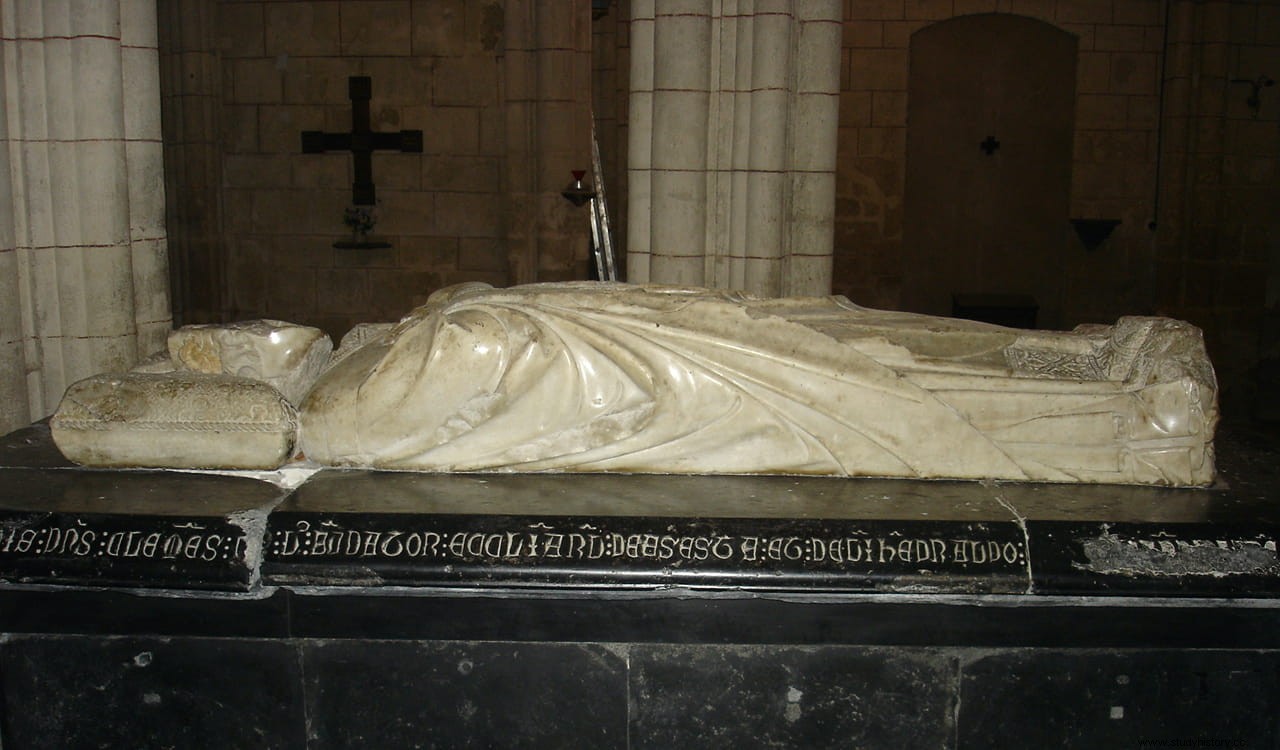
The worst was the confrontation between Felipe IV el Hermoso and Pope Boniface VIII when they became entangled in a verbal dispute over the collection of taxes from the clergy, which led to French troops in Italy imprisoning the pontiff in Agnani, accusing him of being a heretic, while the latter threatened the former with excommunication. The death of Bonifacio solved it but his successors, first Benedict XI and then Clement V, inherited the problems derived from the weakness of the institution at that time, so the second began a process of rapprochement with Felipe, who offered him to settle in Poitiers. in exchange for appointing nine French cardinals and annulling Bonifacio's condemnatory bulls.
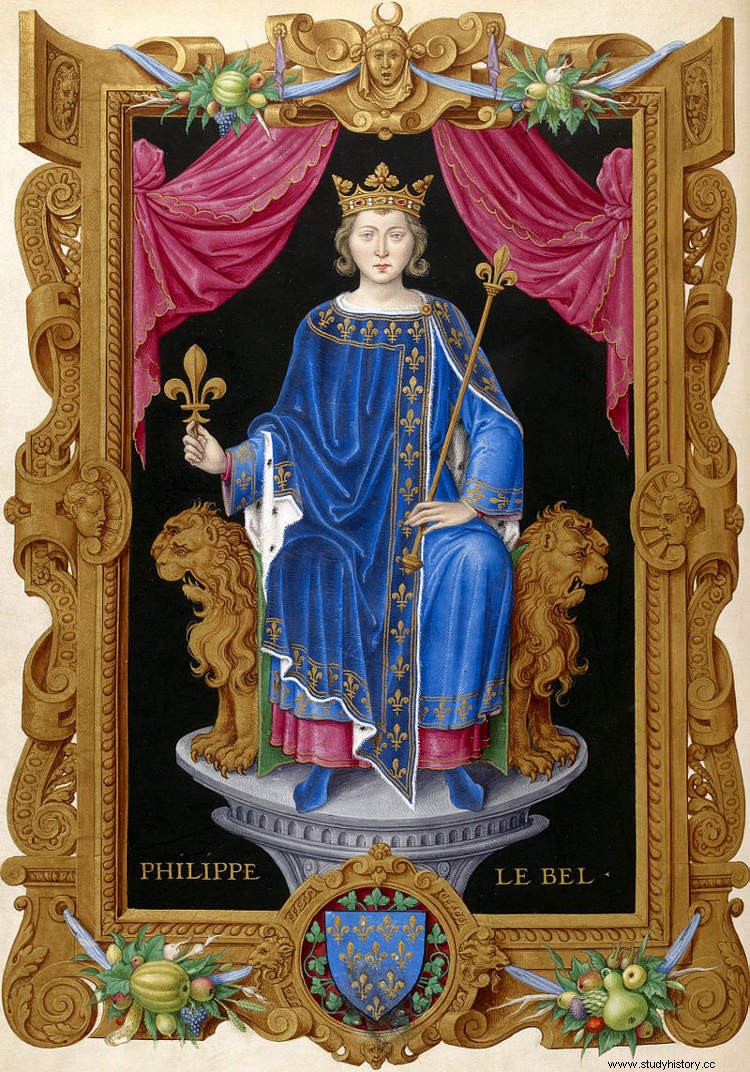
The alliance also had a second objective for the sovereign:to obtain papal support to put an end to the growing power enjoyed by the Order of the Temple and to cancel the large debts that he had contracted with it since he granted a loan to pay the ransom of Luis. IX, captured in the Seventh Crusade. And it is that the Templars had become rich thanks to a territorial expansion that gave them possessions in almost all the European kingdoms and an imaginative financial policy that, in addition to including the privilege of collecting money and goods, prefigured what could be considered the germ of the banks. All this gave them an uncomfortable independence for the royal authority.
On the other hand, they had not given up their project of another crusade that they even tried to carry out on their own by conquering the Syrian island of Ruad (Arwad). Defending it later was, of course, something else:the Mamluks recovered it in two years and it became clear that, however strong they were, they needed help from the Christian states. So Grand Master Jacques de Molay, who since his election in 1292 traveled from court to court in search of allies (the Papacy, Aragon, England, Cyprus…), arrived in France in 1305 with the idea of convincing Philip. Unfortunately for him, he reaped his umpteenth failure because he conditioned any adventure to exercising leadership, something that the other kings were not willing to admit.
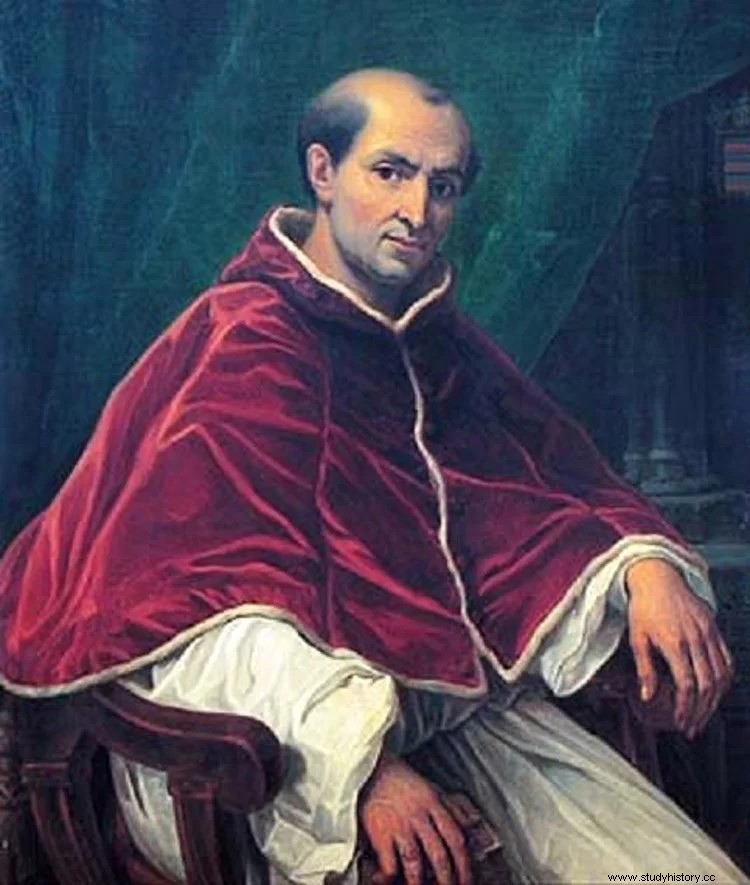
But the worst part was learning that this was linked to a merger of all the religious orders, with someone charismatic and exemplary assuming the leadership, what Ramón Lull had called Rex Bellator , seeking to optimize its effectiveness. It did not matter if it had the approval of Clement V because the Templars and Hospitallers would never accept it, since they had developed an intense rivalry and also considered that they had different objectives. This being the case, the pope summoned the maesters at Potiers in the summer of 1306 to discuss the matter. Due to an illness of the pontiff, the thing was delayed until May of the following year.
While awaiting the arrival of the Hospitaller Grand Master, Fulk de Villaret, Clement V put on the table the denunciations of some ex-Templars about the irregularities that were practiced in the initiation ceremonies, which had given rise to quite disturbing rumors about paganism and heresy. Molay accepted that an investigation be opened without suspecting that the Pope had reached an agreement with the King of France to initiate a process against the order, also encouraged by the characters that we saw in the fragment of the novel that we reviewed earlier:the inquisitor general of France, William of Paris, and the treasurer, Eguerrand de Marigny.
This is when the one we quoted at the beginning appears:Esquieu de Floyran. Not much is known about his life prior to these events, except that he was a native of Biterris (Béziers) and that while in prison accused of murder he shared a cell with a former Knight of the Temple sentenced to death, who confessed to him the details of those events. secret rites. According to Esquieu, the Templar explained to him that in them Christ was denied, sodomy was practiced and sacrileges were carried out against religious symbols (such as stepping on the cross), worshiping Baphomet (an anthropomorphic deity with satanic attributes and uncertain origin). .
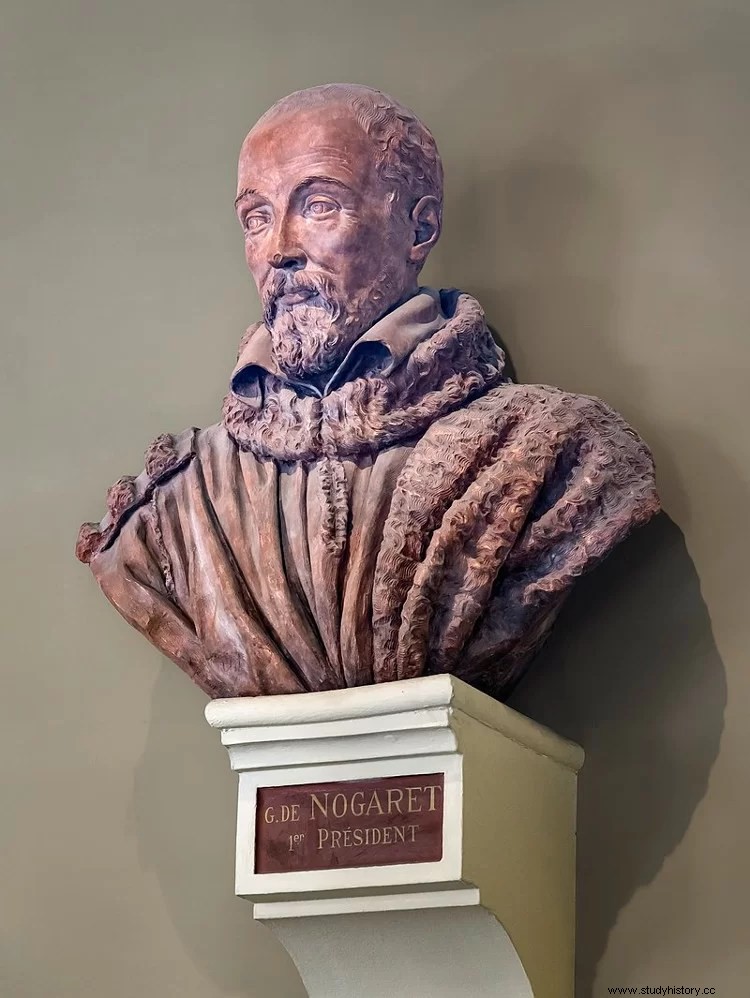
Esquieu had told this story to King James II of Aragon but he did not believe him, throwing him out of the kingdom, so in 1305 he went to the French court. There he was well received by Chancellor Guillermo de Nogaret who, regardless of whether he really accepted the truth of what was narrated, saw in it the opportunity to act against the Order of the Temple and seize its fabulous wealth, including not only the alleged treasures accumulated but also the royalties (customs, tolls, municipal contributions...) and the agricultural and livestock yields of their real estate.
At that time, the crown was up to its neck in water after having devalued the currency, raised taxes and even expropriated Lombard and Jewish merchants. So serious was the situation that in December 1306 there was a revolt in Paris against the rise in rents, the house of the provost of the merchants being burned down and even the king himself being besieged, paradoxically in the Maison du Temple . The disturbances were fiercely repressed with the execution of twenty-eight leaders days later, but Felipe IV was not willing to go through that again, so he listened to his chancellor.
On October 12, 1307, after sending a sealed order to all corners of the kingdom with the indication to open it only that day, the operation began, which included the arrest of all the Templars and the confiscation of their property. One hundred and forty knights were imprisoned in France, including Jacques de Molay, despite the fact that ordinary justice had no jurisdiction over them, hence Clement V himself sent a protest.
But the cunning tricks of Nogaret achieved the confession of almost a hundred prisoners, which earned him the favor of the Estates General and the collaboration of the Pope, thanks to whom the actions against the Temple spread to other countries through the bull Pastoralis praeminens .
The Gallic crown acted against individuals while the papal crown acted against the order. After more confessions extracted under torture or threat of it, sentence was passed in 1314:the grand master would die at the stake together with the tutor of Normandy, Godofredo de Charnay; over the previous years most of his subordinates had done so, although in some countries justice was not so severe and many were acquitted. Of course they no longer belonged to the order, because although the papal commission considered that it could not be blamed as an entity, as indicated by the so-called Parchment of Chinon, Clement V yielded to pressure from Philip IV and dissolved it through the bull Vox in excelso .
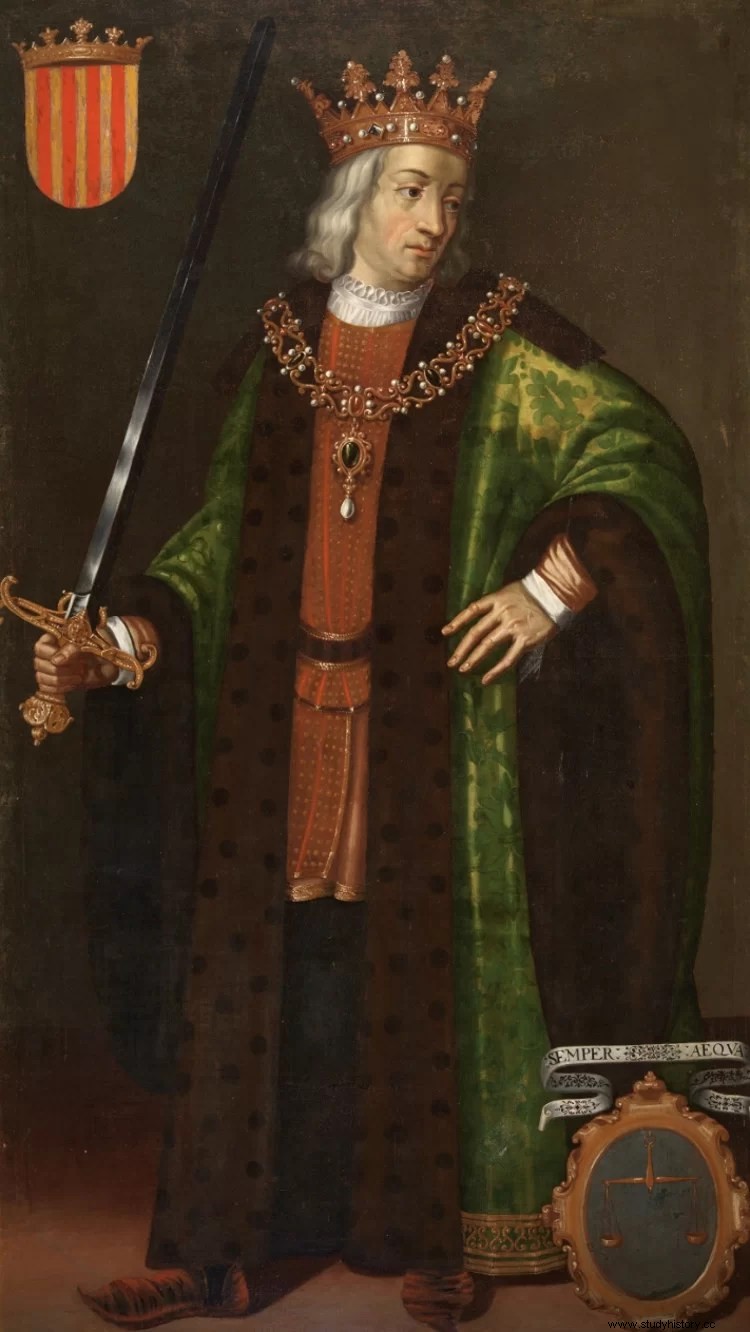
And Esquieu de Floyran? Finished his role in the represented tragedy, on January 28, 1308 he wrote a letter to Jaime II of Aragon reminding him of the words with which the monarch had fired him three years before:that he return when he had evidence and then he would not only act accordingly but it would reward him financially.
In the letter, which is preserved in the Archives of the Crown of Aragon, Esquieu requested verbatim:Qu'il soit Manifeste à votre royale Majesté que je suis l'homme qui a révélé les faits concerning les templiers au Seigneur Roi de France ( May it be revealed to his royal majesty that I am the man who revealed the facts related to the Templars to the Lord King of France ).
We do not know if the Aragonese king agreed to pay -it seems more than unlikely- but we do know that Esquieu ended up taking the robes and being prior of Montfaucon, dependent on the Abbey of San Marcial (Limoges). And that he has gone down in history as the necessary collaborator to light the spark. As the Templar Ponsard de Gizy, commander of Payns (the fiefdom of Hugo de Payns, founder of the Knights Templar), said during the trial:
